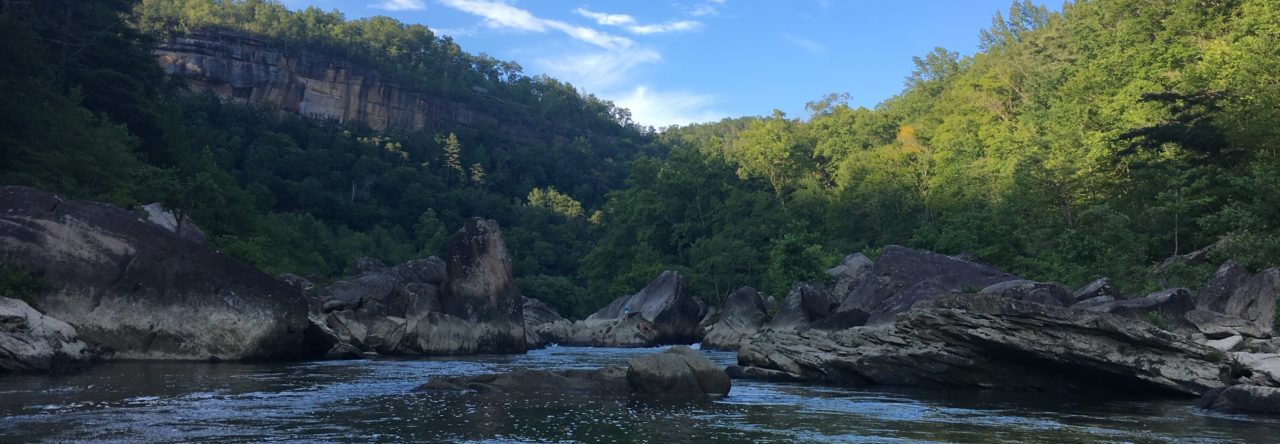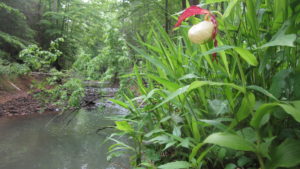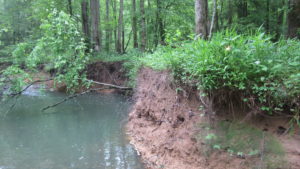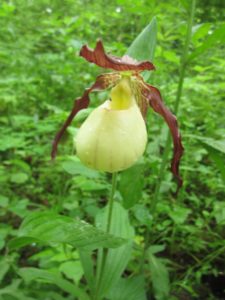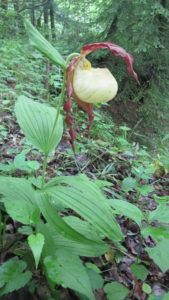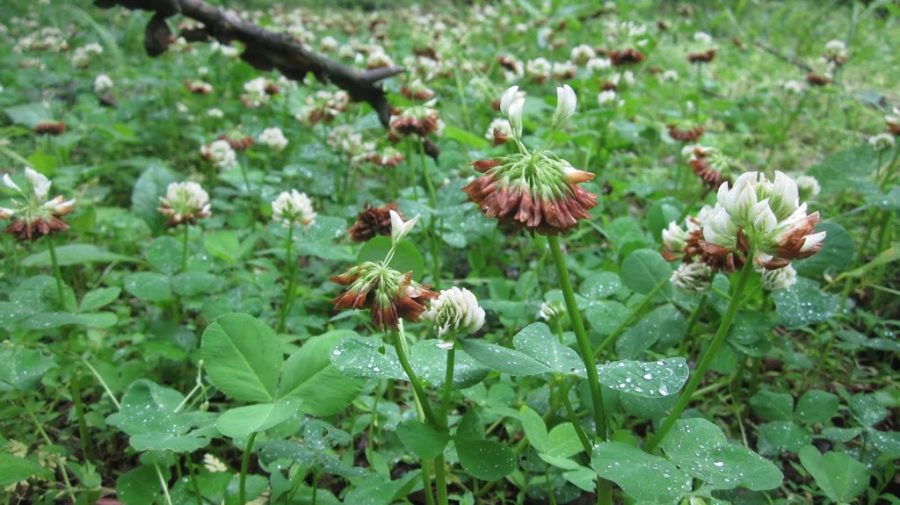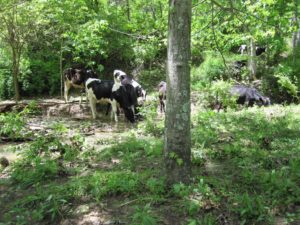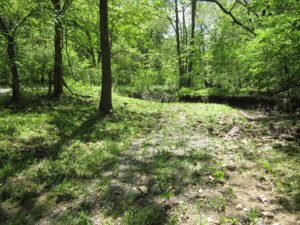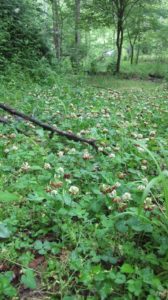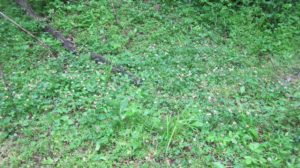It felt like a scavenger hu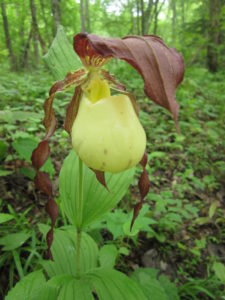 nt as I hiked for miles in search of the elusive Kentucky lady slipper (Cypripedium kentuckiense) orchid that exists along a few of the eastern Kentucky creeks. It sometimes seemed like a figment of my imagination, tucked away amongst the late May herbaceous layer that included Laportea canadensis, Lysimachia cilliata, Meehania cordata, and Viola sp. These orchids occur in just a handful of southeastern states, and until the late 1970’s it was not even known to science. In Kentucky we have a couple dozen known locations, but many of them have declined in the past few decades due to reasons such as logging, ATV’s, mining, camp development along riparian areas, browsing by deer, collection by orchid thieves, and development. There a a few protected sites, but many more are vulnerable.
nt as I hiked for miles in search of the elusive Kentucky lady slipper (Cypripedium kentuckiense) orchid that exists along a few of the eastern Kentucky creeks. It sometimes seemed like a figment of my imagination, tucked away amongst the late May herbaceous layer that included Laportea canadensis, Lysimachia cilliata, Meehania cordata, and Viola sp. These orchids occur in just a handful of southeastern states, and until the late 1970’s it was not even known to science. In Kentucky we have a couple dozen known locations, but many of them have declined in the past few decades due to reasons such as logging, ATV’s, mining, camp development along riparian areas, browsing by deer, collection by orchid thieves, and development. There a a few protected sites, but many more are vulnerable.
As I surveyed the orchids along the riparian area of this wild creek I noticed extreme cutting of the banks, and thick debris piles, evidence of powerful floods. There was even a KY lady slipper with its roots exposed, hanging on for dear life at the edge of a high cut bank that was eroding into the creek. the roots exposed. Logging and mining in the headwaters and upper slopes in this watershed had infuriated the creek, increasing water runoff into the mainstem causing it to rage through the riparian area. If we can try to protect some of remaining forested blocks and encourage regrowth in this badly scarred watershed, can the ladyslipper make a comeback?
